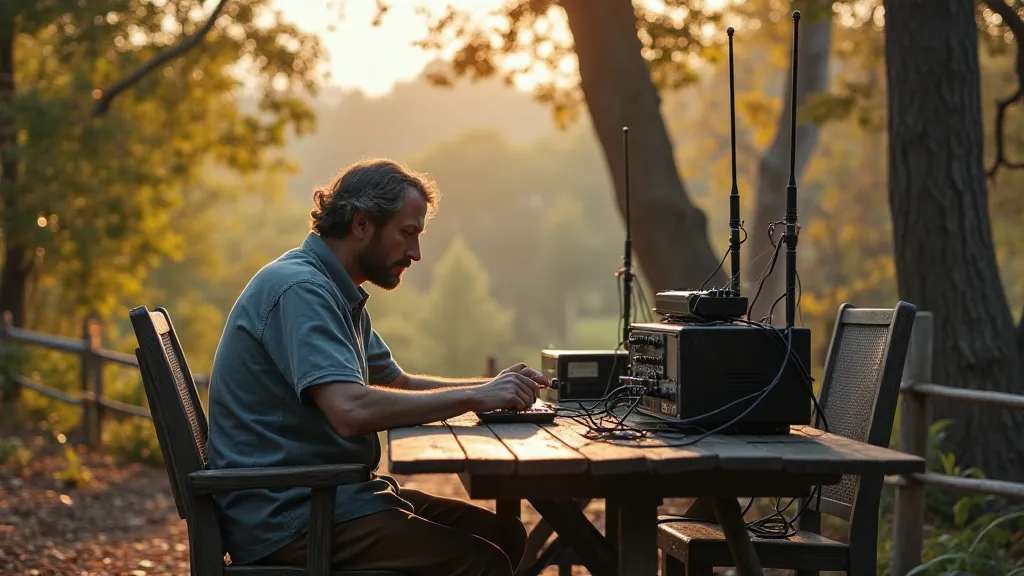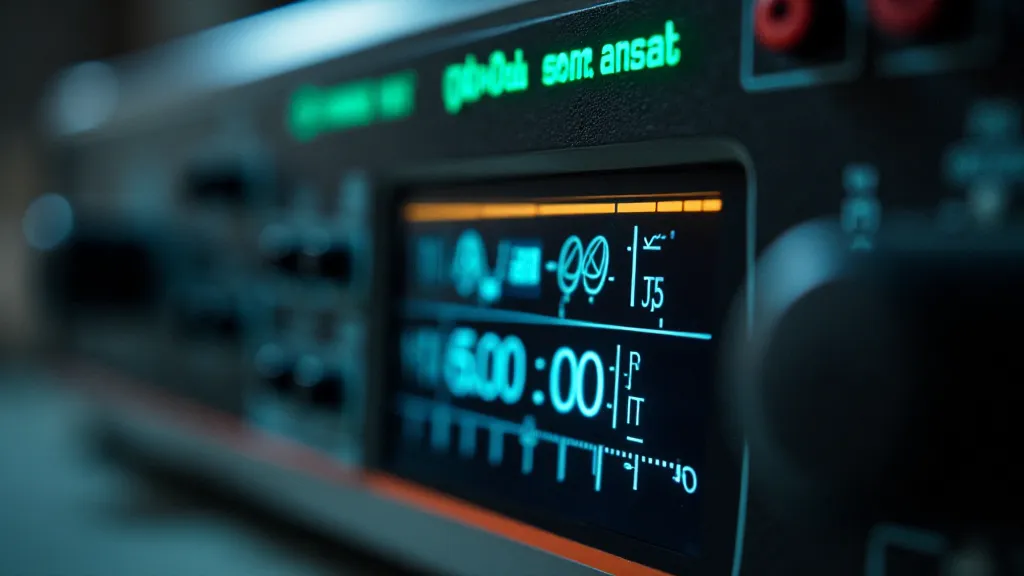Shadows and Signals: Antenna Performance in Challenging Environments
There's a peculiar beauty in the pursuit of clear communication, a beauty mirrored in the craftsmanship of antique accordions. I remember my grandfather, a quiet man of few words, meticulously repairing one he’s found at a flea market. The bellows, brittle with age, the reeds needing careful voicing, the wood subtly scarred by time. He's not just restoring a musical instrument; he’s resurrecting a conversation—a connection to the past. It's a painstaking process, demanding patience and a deep understanding of the instrument’s intricacies. Building and optimizing ham radio antennas, especially when faced with less-than-ideal conditions, feels remarkably similar. It's about coaxing a signal through the noise, understanding the delicate dance of waves, and appreciating the artistry involved.
We all crave clean, crisp signals. We yearn for the unadulterated joy of a clear contact, a voice reaching across continents without distortion. But the reality is, rarely do we operate in a perfect world. Most of us deal with challenging environments—noisy neighborhoods, interference from electronic devices, and the frustrating complexity of multipath propagation. These factors create “shadows” that obscure our signals, just as dust and grime can mute the sound of an accordion’s rich tones. This article isn’t about ideal setups; it's about navigating those shadows, understanding why they exist, and learning how to minimize their impact.

Understanding the Noise Landscape
Noise, in the context of radio communication, comes in many forms. Atmospheric noise, caused by lightning and other natural phenomena, is largely unavoidable. Man-made noise, however, is often the biggest culprit. This includes interference from electrical appliances, computers, switching power supplies, and even poorly shielded wiring. A seemingly innocuous fluorescent light fixture can wreak havoc on your reception, especially on lower bands. Identifying the source of noise is the first step in mitigating it. A noise meter can be a valuable tool for tracing interference to its origin. Sometimes, it’s a matter of simple shielding – wrapping noisy cables with foil or relocating your antenna away from sources of interference.
The Multipath Maze
Multipath propagation occurs when radio signals bounce off surfaces—buildings, hills, even trees—before reaching your antenna. These reflected signals arrive at your receiver slightly delayed, creating interference patterns. Constructive interference strengthens the signal, but destructive interference can effectively nullify it. The effect is especially pronounced in urban environments with dense building structures. The result is often a distorted signal, fading, and unpredictable reception. There's no easy fix for multipath; it’s a fundamental aspect of radio propagation. However, antenna placement and diversity techniques can help. A higher antenna, offering a clearer line of sight, often improves reception. Using two antennas, spaced apart, and combining their signals can help to average out the effects of multipath.
Antenna Design Strategies for Challenging Environments
While the ideal antenna design often focuses on maximizing gain and efficiency in a perfect environment, reality dictates a different approach when dealing with challenging conditions. Broadband antennas, like log-periodic Yagis, tend to be more forgiving of antenna misalignment and multipath. They operate effectively over a wider frequency range, reducing the impact of slight frequency shifts caused by multipath. Vertical antennas, with their omnidirectional radiation pattern, can sometimes be less susceptible to nulls caused by multipath compared to highly directional antennas like Yagis. Experimentation is key. A simple ground plane antenna, constructed from readily available materials, can often surprise with its performance. The critical part of the ground plane antenna isn't the size, but the evenness of the ground radials. Poorly grounded radials will greatly reduce the antennas effectiveness.

The Art of Compromise and Experimentation
Building ham radio antennas isn’t just about following plans; it’s about understanding the principles and adapting them to your specific environment. It’s about recognizing that there's no "perfect" solution, only the best compromise given the circumstances. Just as restoring an accordion requires careful judgment and a willingness to adapt techniques based on the instrument’s unique condition, building antennas for challenging environments demands flexibility and creativity.
Think of the skilled accordion craftsman. He understands that the wood may be warped, the bellows may be torn, the reeds may be damaged. He doesn't follow a rigid formula; he assesses the situation and applies his knowledge and experience to achieve the best possible result. The same applies to antenna building. A little ingenuity and experimentation can often yield surprising results. Try relocating your antenna, adjusting its height, or modifying its design. Document your changes and their effects. The process of trial and error is an essential part of learning.
RF Principles - A Foundation for Success
A basic understanding of radio frequency (RF) principles is invaluable when troubleshooting antenna problems. Concepts like impedance matching, SWR (Standing Wave Ratio), and antenna gain aren’t just technical jargon; they’re tools for understanding how your antenna interacts with your transceiver. A high SWR indicates a mismatch between the antenna’s impedance and the transceiver’s output impedance, which can lead to reduced efficiency and potential damage to your equipment. Using an antenna analyzer can help you diagnose impedance mismatches and optimize your antenna system. There are many excellent resources available online and in print that cover the fundamentals of RF principles. Invest the time to learn these basics; it will pay dividends in the long run.

Embracing the Challenge - A Source of Joy
Operating ham radio in challenging environments isn’t always easy. There will be times when you feel frustrated by noise and interference. But overcoming those challenges can be incredibly rewarding. The satisfaction of coaxing a signal through the noise, of making a contact when others are struggling, is a unique and special feeling. It's a testament to your skill, your persistence, and your understanding of the art and science of radio communication. Like the accordion craftsman who finds joy in restoring a piece of history, we, as ham radio operators, find satisfaction in conquering the challenges of the airwaves. It’s a pursuit of clear signals and meaningful connections, a testament to human ingenuity and a celebration of the power of communication.





